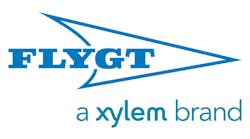Jefferson Parish, La., extends along a 15-mile-wide corridor west of and upriver from New Orleans. As demonstrated by the recent Hurricane Isaac, this parish is vulnerable to tropical storms and hurricanes from June through November in a region that is already known for high rainfall events throughout the year. To make matters worse, the structural and operational integrity of the parish’s sanitary sewer lines and pump stations are compromised by age and very minimal budgets to maintain the equipment in place.
Project
Jefferson Parish sewer rates are among the lowest in the country for a system of its size and economic importance to the region. Even routine storms can spawn enough rainfall to induce surges of inflow and infiltration (I&I) that can overload stretches of the parish’s 1,500 miles of gravity sewer lines, 200 miles of force mains and 505 lift stations that range from single hp installations to facilities with multiple 400 hp pumps.
Rain events—frequently two to four inches—and poor soil conditions would surcharge the collection lines and aggravate the already chronic clogging of lift stations when flows carry nonwoven consumer products such as dusters, cleaning wipes and hygienic wipes.
During dry periods, the synthetic fibrous waste settled out with other solids at the bottoms of lift stations and collection lines until peak flows and I&I events churned it up, entangling traditional “solids-handling” impellers. As the ragging built up, it compromised the system’s efficiency.
Solution
As part of a planned four-station trial, Gulf States Engineering—a local Xylem Flygt representative—installed the recently introduced Flygt Experior pump system in Jefferson Parish.
The Bellview & Airline duplex lift station, which had been notorious for clogging as often as two or three times daily, received only the Experior system’s Adaptive N-pump in April 2011. The following month, the duplex facilities at Kawanee & Woodlawn, Deckbar & Railroad, and Irving & St. Mary all received fully integrated 5 hp Experior systems that include SmartRun controls.
Result
Upon initial installation, one of the pumps operated at an energy consumption rate that was proportional to the initial startup frequency of 60 Hz. The SmartRun controls automatically identified the targeted optimal speed and adjusted to 38 Hz after only two days of operation, according to George Peart, director of sales for Gulf States Engineering. To date, the stations have experienced reduction in energy use of approximately 50%.
Prior to receiving the Experior systems, the cost for a single work order—in addition to the routine cost of daily inspections at every facility—could reach more than $400. Moreover, an incident could tie up manpower by requiring not only the two-man inspection team, but also a mechanic and electrician at the location. To date, none of the four stations with Flygt systems have experienced pump failures since their installation.
The Experior solution has provided Jefferson Parish 50% savings in energy costs in addition to maintenance costs savings, and it supports the Parish’s ability to better serve the community with a reliable sewer system.



